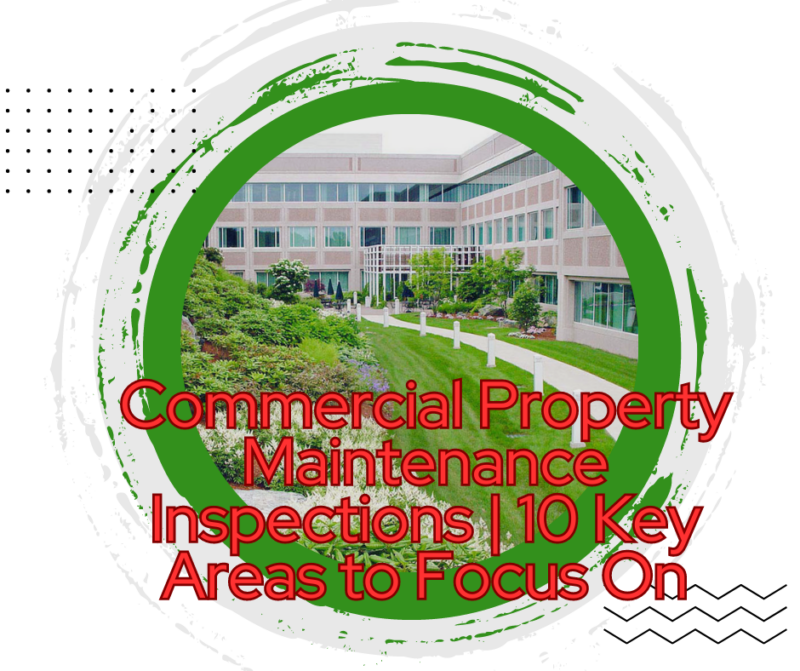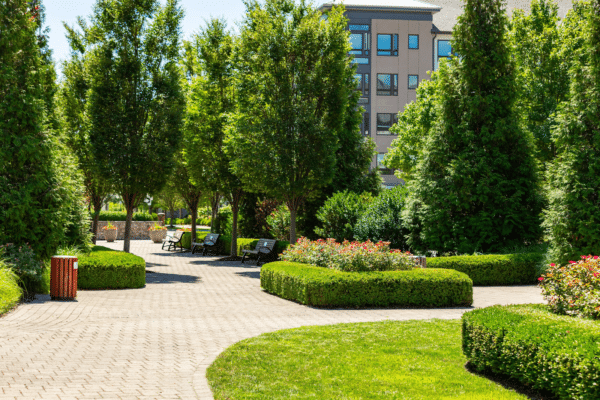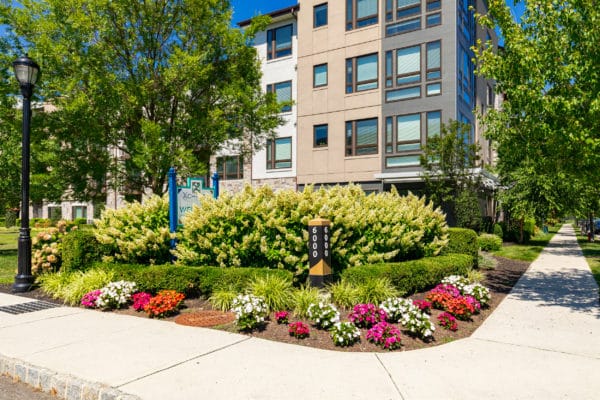
As a property manager, you oversee every aspect of how buildings, infrastructure, landscaping and other site features are maintained. You can’t do it all. When you partner with a commercial landscape professional, you alleviate a significant safety and maintenance responsibility. While aesthetics and preserving your brand image with curb appeal is a priority — so is addressing conditions that can degrade property value and put tenants or visitors at risk.
Commercial property maintenance inspections cover all the bases. What should you expect?
When we conduct property walk-throughs, there are a few goals. First, we want to identify any issues on the grounds that need immediate attention. That could mean an area of turf that is not thriving because of lack of sun exposure, a plant that needs replacing or replanting because it has outgrown the landscape bed or shrubs that need trimming to improve sight lines.
Next, we identify opportunities to improve aesthetics, safety, property value and the experience people have when they are on your commercial property. That might include updating the entrance landscaping, improving lighting or adding an outdoor gathering space.
Finally, we plan ahead. What landscape projects are you considering next season, next year and down the road? Will these enhancements be completed in phases? This could entail more immediate maintenance-related undertakings like changing out annuals in landscape beds or containers. It also can involve longer-term endeavors such as completely relandscaping an outdated space.
No matter what, regular commercial property maintenance inspections are a must to maintain the beauty, integrity and safety of your landscape. Here are 10 key areas we focus on when conducting property site visits. Note: These are not ordered by priority. They’re all important.

#1 Trimming Branches – Proactive Pruning
Overgrown tree branches that touch rooflines can invite pests, including damaging carpenter ants. And when branches cross over walkways or block windows, there’s a safety concern, and you’re blocking views. We identify tree and shrub growth that is interfering with sight lines and pedestrian areas and plan to remove those to avoid injuries or insect problems that are easily avoidable.
#2 Inspecting for Insect Pressure
Speaking of insects, a thorough commercial property inspection includes inspecting landscape beds alongside buildings and turf for pest pressure. There are common signs that insects are present on your commercial property. For example, in turf, we might detect chewed grass blades, wilting grass, dead or dying patches, brown spots and actual insect sightings. Animal damage is also another clue, especially with grubs that attract critters like skunks. They tear up the lawn looking for insects to eat.
#3 Identifying Declining Plants
Before a plant checks out completely, we like to determine if it can be nursed back to health with a proper plant healthcare program. Otherwise, it’s best to remove and replace the failing plant before you expend resources attempting to revive it. Besides, declining plants deteriorate curb appeal. Not all plants last. Disease and environmental conditions can prey on even the hardy varieties.

#4 Addressing Lawn Problems
A site inspection of your commercial property’s lawn can help a landscape professional identify weak spots, such as shaded areas where turf is struggling. (A solution might be to open up an overgrown tree canopy to let in more light or consider a ground cover instead.) We can determine if your customized lawn care program needs to be tweaked. Taking a soil sample will give us a clear picture of what lies beneath so we can make adjustments to fertilizer, weed and disease control.
#5 Assessing Hardscape
Hardscape requires maintenance, too. Over time, repairs might be necessary to maintain its safety and integrity. Power-washing can refresh the look. During a commercial property site inspection, we will identify whether repairs, sealing or replacement is required.
#6 Looking for Irrigation System Leaks and Breaks
A higher water bill, pooling water around sprinkler heads, low pressure and visible damage are indications that your commercial property’s irrigation system needs attention. Beyond that, we are installing smart irrigation systems that are efficient, save water and allow us to maintain them remotely to save on time and cost. Is it time for an irrigation audit? This more in-depth inspection can reveal system incompetencies.

#7 Flagging Areas with Debris Buildup
Spring and fall cleanups are essential commercial property maintenance tasks. But usually, properties need cleanups throughout the growing season. Storms and wind can kick up leaf debris and other green waste, and often we see buildup in corner areas around buildings, which can be a problem — not just because it looks bad. Critters and pests find homes in debris buildup. Regular cleanups prevent having to spend more time and money addressing insect and wildlife issues.
#8 Checking Landscape Lighting for Safety and Aesthetics
Landscape lighting extends the time your tenants and guests can spend outdoors, and it also sends a safety message in a number of ways. It helps pedestrians see in the dark, discourages trespassers and acts as another layer of security.
#9 Changing Out Annuals in Landscape Beds and Containers
Don’t let annuals planted in landscape beds and containers fade. It’s best to replace them with fresh annuals for the season or consider long-lasting perennials and native plants that require less maintenance.
#10 Paying Attention to Details – Edging and Blowing
It’s all about the little-big things: clean edges on your commercial property’s lawn, making sure grass clippings are blown off of walkways and parking lots, and keeping bed lines neat. The extra steps your landscape maintenance professional takes to complete a job well done make a big difference. When we are conducting a first-time property walk-through, we take note of areas where a provider is overlooking basic yet essential maintenance tasks

Get Your Commercial Property on Track with Neave Management
At Neave Management, we take the time to walk your property with you, discuss your vision and identify areas that could be improved. We listen. And this is the foundation of a successful partnership. Let’s set up a free, pre-season site visit so we can identify ways to get a jumpstart in spring.
We look forward to getting to know your property. If you’re in the Hudson Valley, call us at 845-463-0592. If you’re in Westchester County, call 914-271-7996; from Connecticut, dial 203-212-4800; from New Jersey, dial 201-591-4570. Or, fill out our simple web form, and we’ll contact you about setting up your free consultation.